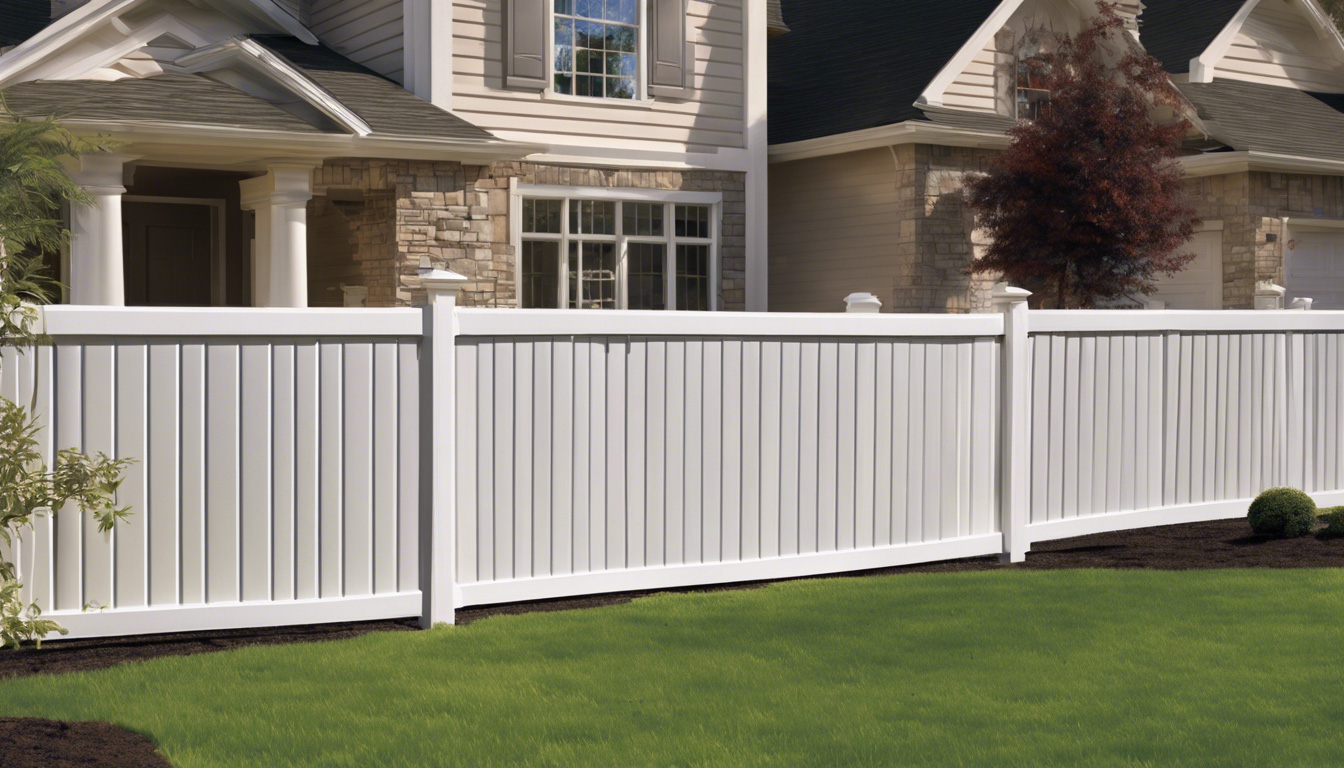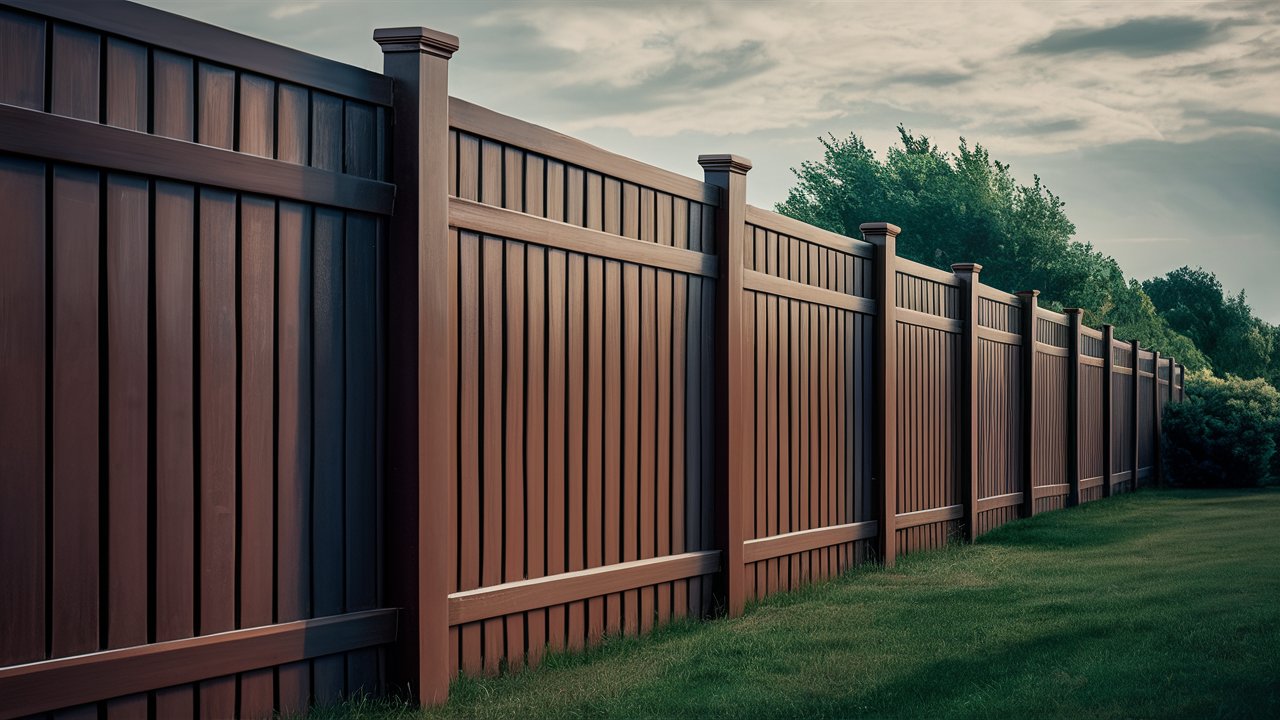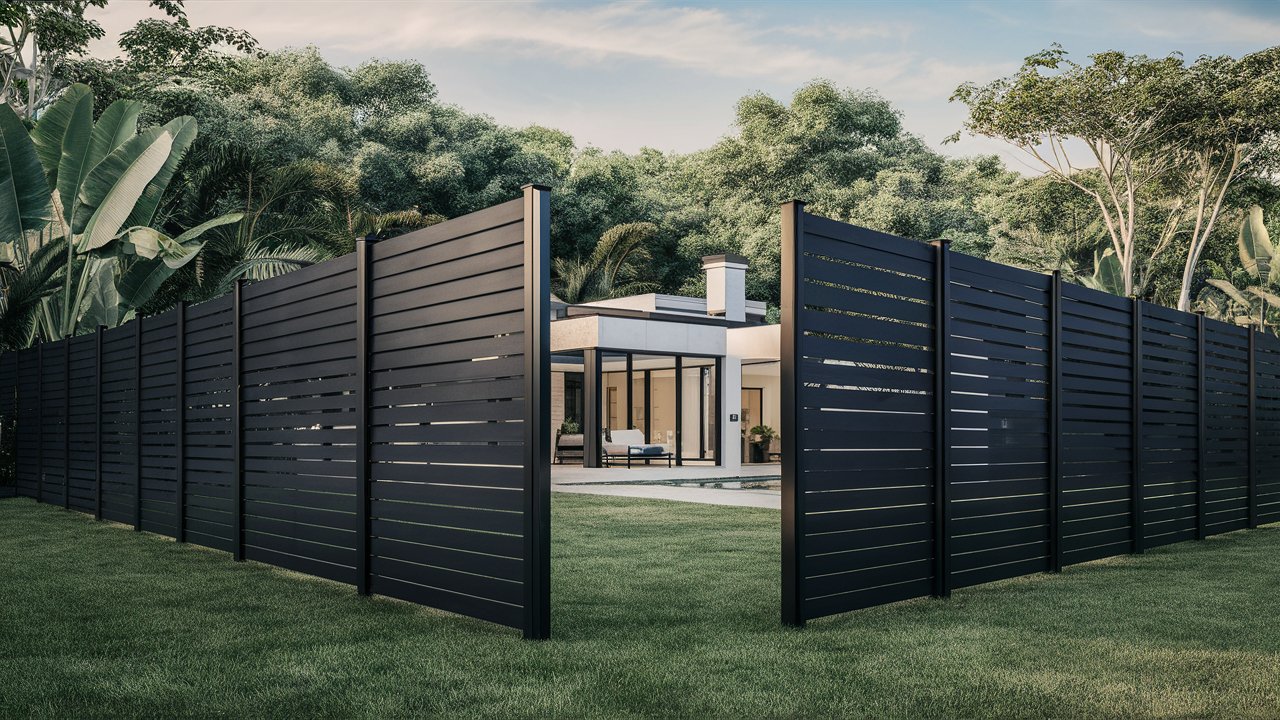Vinyl Fencing Advantages Over Wood Fencing: Durability and Low Maintenance Benefits
When comparing fencing options for a yard, two common materials stand out: wood and vinyl. Each comes with its own advantages, but in recent years, vinyl fencing has emerged as a premier choice for homeowners looking for a blend of aesthetic appeal and low maintenance.
Vinyl fencing excels over wood in its longevity as it is not susceptible to warping or rotting and generally stands up better against the elements over time.
The aesthetic versatility of vinyl fencing is another significant advantage. Vinyl comes in a variety of styles, colors, and textures, making it easy to find a design that complements a home or landscaping without the need for painting or staining.
Moreover, vinyl fences offer ease of maintenance; they can be easily cleaned with soap and water and do not require regular treatments or repairs as a wood fence would.
Key Takeaways
- Vinyl fencing often outlasts wood with its durable and weather-resistant properties.
- A range of design options and ease of care contribute to vinyl’s aesthetic benefits.
- Vinyl provides a long-term savings advantage due to minimal maintenance needs.

Durability and Longevity
In comparing vinyl and wood fences, one will find significant differences in durability and longevity that stand out.
Vinyl fencing showcases a resilience against many of the issues that commonly degrade wood fencing, such as rotting and insect infestation.
Resistance to Elements
Vinyl fencing possesses a remarkable resistance to the elements, thwarting the common decay factors that affect wood fences:
- Weathering: Vinyl stands up to various weather conditions, including intense sunlight, rain, and snow, without warping or fading.
- Rot and Decay: Unlike wood, which is prone to rot and decay especially when exposed to moisture, vinyl material does not absorb water, making it immune to this form of deterioration.
- Pests and Fungus: The material’s composition is inhospitable to pests such as termites and carpenter ants, and it is not susceptible to fungus growth.
Low Maintenance Requirements
The low maintenance needs of vinyl fences make them a durable option over time:
- No Painting or Staining: Vinyl does not require painting or staining to maintain its appearance or protective qualities.
- Cleaning: A simple cleaning with soap and water is typically all that is needed to keep a vinyl fence looking like new.
- Longevity: Manufacturers often offer warranties of up to 50 years for vinyl fences due to their extended lifespan compared to wood.
Aesthetic Appeal and Design Options
Vinyl fences offer a range of aesthetic advantages that can enhance curb appeal with a modern aesthetic, providing homeowners with diverse design options and a clean appearance that suits various landscaping styles.
Variety of Styles and Colors
Vinyl fences come in an extensive selection of colors and styles, allowing them to complement a wide array of architectural designs.
Available colors range from classic white to rich, wood-tone hues, offering choices that can either stand out or blend seamlessly with the environment. Styles include:
- Private: Solid panels without spacing between the slats.
- Semi-private: Small gaps between the slats.
- Picket: Traditional design with slats spaced evenly apart.
- Ornamental: Decorative patterns and accents for enhanced aesthetic appeal.

Texture and Finish
The texture of vinyl fencing can closely replicate the grain of natural wood, adding to its aesthetic beauty without the maintenance wood requires.
Finishes are generally smooth and non-porous, which contributes to the longevity of the fence by preventing dirt buildup and simplifying cleaning. Possible finishes include:
- Smooth: A clean, glossy appearance that resists dirt and grime.
- Wood-Grain: A textured finish that mimics the natural look of wood.
Customization Potential
Customization is a notable benefit of vinyl fencing, allowing homeowners to shape their landscapes according to their personal preferences.
While wood fences can be cut and styled with some versatility, vinyl offers precision in design without the need for frequent maintenance. Customization can include unique:
- Heights and Widths: Tailored to specific boundary needs and aesthetic desires.
- Decorative Features: Post caps, lattice work, and scalloped edges for individualized style choices.
Cost-Effectiveness
Vinyl fencing is recognized for its cost-effectiveness, influenced by initial outlays and long-term financial benefits. It stands as a low-maintenance alternative to wood fencing, often proving to be less expensive over time due to minimal repair and replacement expenses.
Initial Costs vs Long-Term Savings
- Initial Costs: While the initial investment in vinyl fencing is higher, with costs ranging approximately from $15 to $30 per linear foot for professional installation, it offers significant long-term savings.
- Long-Term Savings: Vinyl fences typically do not require the regular maintenance associated with wood fences, such as staining or sealing, and they do not suffer from issues like rotting or warping. This characteristic enables them to maintain their value and appearance over time with less financial input in maintenance.
Repair and Replacement Expenses
- Repairs: One of the noteworthy advantages of vinyl over wood is the reduction in repair costs. Vinyl fences are less likely to need repairs because they are not prone to issues like insect damage or moisture-related decay.
- Replacement: Should a repair be necessary, individual vinyl panels can often be replaced without affecting the rest of the fence. This contrasts with wood fences, which may require more extensive work as they age, driving up the long-term financial investment due to increased labor and material costs.
Environmental Considerations
The environmental impacts of fence materials are significant, and consumers who prioritize sustainability have a vested interest in understanding the ecological footprint of their choices.
Vinyl fencing, made primarily of PVC or polyvinyl chloride, presents both eco-friendly attributes and areas of environmental concern.

Eco-Friendly Materials
Vinyl fences are touted for their non-toxic properties since they do not require preservatives or painting, thus eliminating the potential release of harmful chemicals into the environment.
They are inherently resistant to pests and decay, reducing the need for chemical treatments. Additionally, some manufacturers incorporate recycled vinyl into their products, which supports the reusability aspect of plastic materials.
Table 1: Comparison of Materials Used in Fencing
| Material | Eco-Friendly Aspects | Concerns |
|---|---|---|
| Vinyl (PVC) | * Non-toxic | * Production emissions |
| * Recycled content possible | ||
| Organic Woods (Cedar, Redwood) | * Biodegradable | * Deforestation concerns |
| Pressure-Treated Pine | * Preservative chemicals to extend life | * Use of harmful chemicals |
Sustainable Practices
When evaluating sustainability, vinyl fencing has advantages in the long term.
Its durability means that it does not need to be replaced as frequently as wood fences, including organic options like cedar or redwood, and pressure-treated variants.
A longer lifecycle for vinyl fences implies less manufacturing demand and waste, which can be seen as a more sustainable practice.
Additionally, when vinyl fencing does eventually reach the end of its lifespan, efforts to recycle the material are in place, further reducing its environmental impact.
- Durability Factors:
- Vinyl is highly resistant to moisture and UV rays.
- It remains stable and does not rot, warp, or splinter.
- Minimal maintenance required over its lifespan.
- Sustainable Outcomes:
- Reduced frequency of replacement.
- Lower long-term waste generation.
- Recycling opportunities at end of life cycle.
Frequently Asked Questions
When considering a fence installation, homeowners often weigh the pros and cons of vinyl versus wood fencing. These FAQs highlight the critical distinctions between the two materials, touching on maintenance, durability, cost, aesthetics, and environmental factors.
What are the maintenance differences between vinyl fencing installed and wood fences?
Vinyl fencing is largely maintenance-free, requiring only occasional rinsing with a garden hose to maintain its appearance. Wood fences, on the other hand, demand regular treatments such as painting, staining, and repair to address warping or rotting boards.
How do vinyl fences compare to wood fences in terms of durability?
Vinyl fences excel in durability, offering resistance to rot, decay, and termite damage. Wood fences are susceptible to these issues and may have a shorter lifespan without timely maintenance to keep them intact and functional.
What are the long-term costs associated with vinyl fencing compared to wood fencing?
Initially, vinyl fencing may present a higher upfront cost compared to wood, but it typically incurs fewer long-term expenses due to its minimal maintenance requirements. Wood fencing, while cheaper at the outset, can become costlier over time as it requires ongoing treatments and repairs.
How do the aesthetic options vary between vinyl and wood fencing?
Wood fencing offers a classic, natural look that can be tailored through staining or painting. Vinyl fencing provides a more uniform and smooth appearance, with a variety of colors and textures available to suit different preferences.
What environmental factors should be considered when choosing between vinyl and wood fences?
Homeowners should consider that wood fences, while made from a natural and potentially renewable resource, require chemical treatments for maintenance which can have an environmental impact.
Vinyl fencing, although synthetic and non-biodegradable, requires less frequent replacement, potentially reducing waste over time.
While wood fencing makes for an excellent privacy fence, vinyl privacy fencing will stand the test of time.


